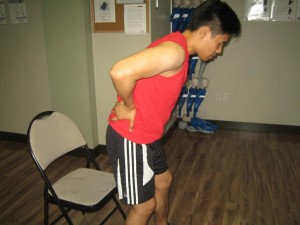Flank pain is basically the pain or discomfort in the upper back or abdomen. It is situated beneath the ribs and above the pelvis on the side. This type of pain usually affects the side and back. In most cases, the pain is worse on one side of the body.
Many individuals experience flank pain at least once in their life and it does not last long. Nevertheless, severe or constant flank pain might be caused by a serious medical condition such as infection in the urinary tract or dehydration. In case severe flank pain manifests abruptly, it might be due to kidney stones. If it is chronic, it might be due to other causes.
Flank pain is often a sign of kidney problem but it can also indicate other medical conditions if it is accompanied with other symptoms. Individuals who experience chronic flank pain should consult their doctor.

Causes of flank pain
Always bear in mind that different conditions that range from mild to severe can cause flank pain. Here are some of the common causes:
- Infection in the spine
- Arthritis
- Spinal fracture
- Disk disease
- Pinched nerve in the back
- Muscle spasm
- Kidney stones
- Infection of the kidney
- Kidney abscess
- Dehydration
- Shingles
- Pneumonia
- Pancreatitis
Associated symptoms
Flank pain is best described as an aching, cramp-like pain that occurs in waves. In most cases, kidney stones usually cause pain that is extreme and colicky. The flank pain due to kidney stones will make it difficult for the individual to lie down in one position comfortably. Flank pain can be accompanied with other symptoms such as:
- Fever
- Rash
- Dizziness
- Nausea
- Diarrhea
- Constipation
- Blood in the urine
It is important to call the doctor right away if the following symptoms are present along with flank pain:
- Fever
- Chills
- Nausea
- Vomiting
- Prolonged or severe pain
- Blood present in stool or urine
Do not forget that dehydration is one possible cause of flank pain. It is important to seek immediate medical care if the flank pain is accompanied by the symptoms of dehydration:
- Dizziness
- Extreme thirst
- Lack of sweat output
- Rapid pulse
- Headaches
- Dry, sticky mouth
- Decreased urine output
- Constipation
Diagnosis
Once an appointment is scheduled with a doctor, the condition causing the flank pain will be identified. The doctor will ask when the pain started, type of pain experienced, other symptoms present, how often the pain is experienced, if pain is abrupt and temporary, if there is pain in other parts of the body and if there is a decrease in the urine output. Imaging scans and blood tests might be required to diagnose the pain.
[youtube url=”http://www.youtube.com/watch?v=yXleLhGFkDI”]Treatment
Rest is the initial first aid measure for any type of flank pain. For minor cases, the pain can be treated with both rest and physical therapy.
As for pain due to inflammation, the treatment depends on the condition. In most cases, anti-inflammatory medications are prescribed to relieve the pain and inflammation.

